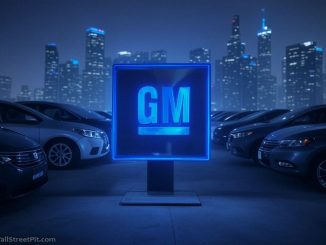
In a bold declaration for the future of driving, General Motors’ self-driving arm, Cruise Automation, announced on Friday (Jan. 12) plans to mass-produce a self-driving car that has no steering wheel, pedals or manual controls.
After stressing in a report the safety aspect of its fully autonomous vehicle, GM (NYSE:GM) revealed images of what the fourth generation of its Chevy Bolt-based electric driverless vehicle, the Cruise AV, will look like. The automaker also announced that it’s hoping to put its fully autonomous car into production by 2019 and is petitioning the National Highway Traffic Safety Administration for permission to do so.
The safety agency has said that it would give GM’s petition “careful consideration.”
If regulators in Washington approve, GM plans to test up to 2,500 of these cars on public roads in a ride-hailing capacity within a pre-determined area.
Self-driving technology “is only going to have a big impact if we can deploy it at large scale,” GM President, Dan Ammann, said in an interview with The New York Times.
biggest assembly plant in the GM system.
The Cruise AVs would probably appear first in San Francisco, Tesla’s (NASDAQ:TSLA) back yard, or Scottsdale, Arizona, where Cruise Automation is conducting tests.
In its safety report about the project, the American auto giant details how the versions of the self-driving cars will be fitted with five high-precision laser sensors (lidars), 16 cameras, and 21 radars to perform perception functions, and how the information obtained from each system will be shared with each individual Cruise AV through a database that will allow the cars to share the knowledge they gain on the road with the rest of the Cruise AV fleet.
As you can see from the video below, Cruise AV is totally different from other self-driving models. It has no controls whatsoever. In fact, GM describes the car as “the first production-ready vehicle built from the start to operate safely on its own, with no driver…”
GM also details in its report how the 4-passenger vehicle will be summoned by an app – much like using Lyft or Uber. The only difference is that “customers will control the experience – their customized climate control and radio station settings will be sent to the vehicle ahead of when they access their ride.”
The report also explains that once inside, passengers will receive constant updates on the car’s progress and status through a series of touch-screens. Once the ride is over, if passengers forget to close the doors, the vehicle can close them itself and move on to the next customer.
General Motors is not the only American carmaker working on driverless technology. Rival companies like Ford (NYSE:F), Mercedes and Google’s Waymo are also developing and planning to release a car with no steering wheel or pedals. However, none of them are expected to go into mass production by 2019.
GM in the meantime, said it plans to build its driverless cars at the the Orion Township plant in Michigan.
It’s “[our] biggest assembly plant,” Ammann said, explaining that America’s Nr. 1 carmaker has “fantastic capacity to build the vehicle.”
Last month Ammann was quoted as saying that being first creates a “significant gap versus competition,” and there’s a “very interesting first mover advantage.” Asked if it could be a monopoly business, Ammann said he didn’t rule out the possibility.
An interesting statement to say the least, especially when considering that many had already equated Tesla’s Model 3 potential impact on the auto industry to the iPhone’s effect on tech.
- Bulenox: Get 45% to 91% OFF ... Use Discount Code: UNO
- Risk Our Money Not Yours | Get 50% to 90% OFF ... Use Discount Code: MMBVBKSM
Disclaimer: This page contains affiliate links. If you choose to make a purchase after clicking a link, we may receive a commission at no additional cost to you. Thank you for your support!



IF this auto driving vehicle has room for my wheelchair, I’ll buy one asap!